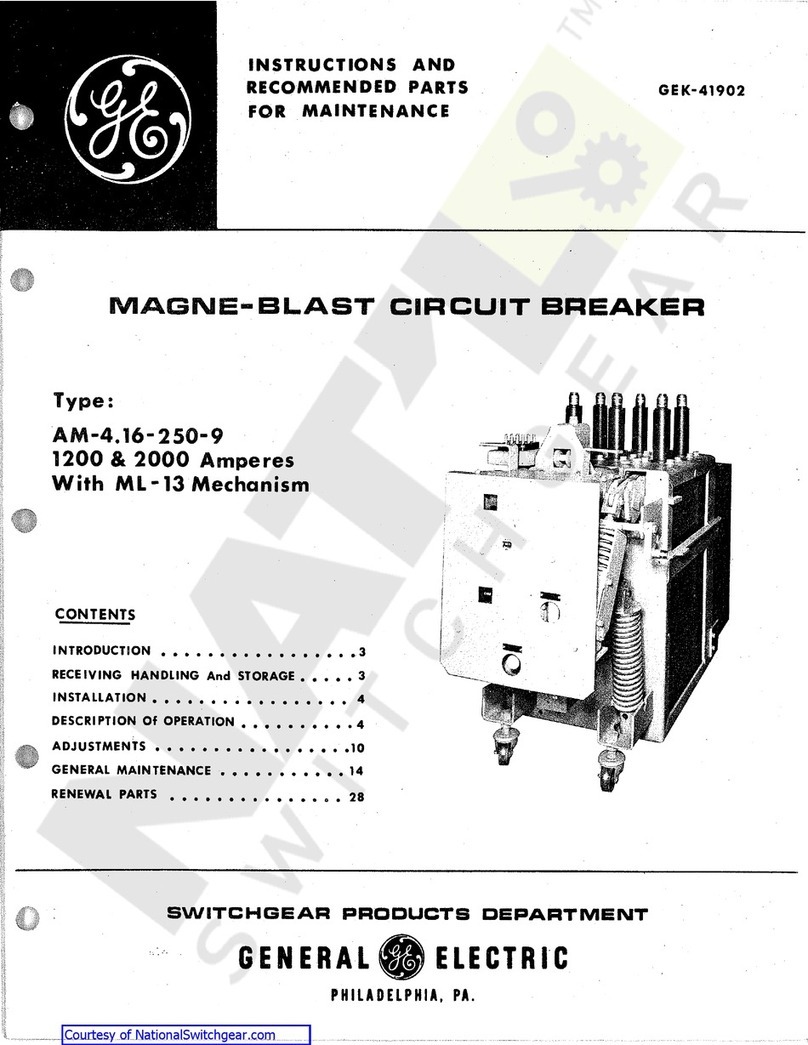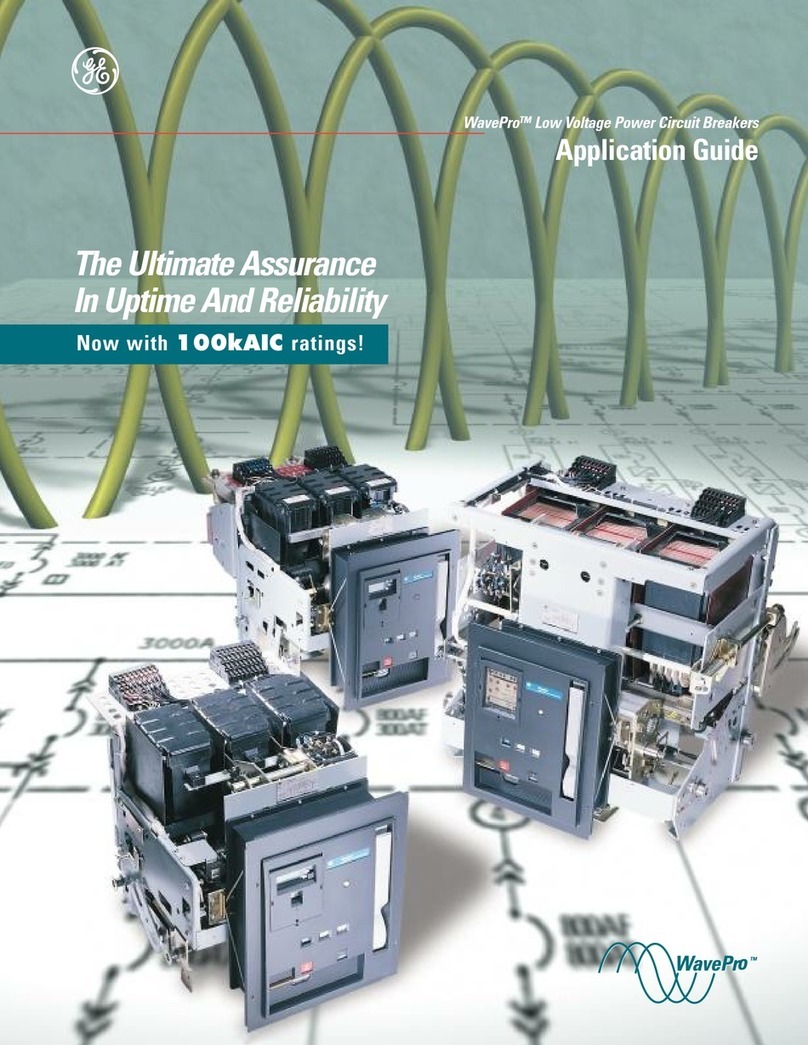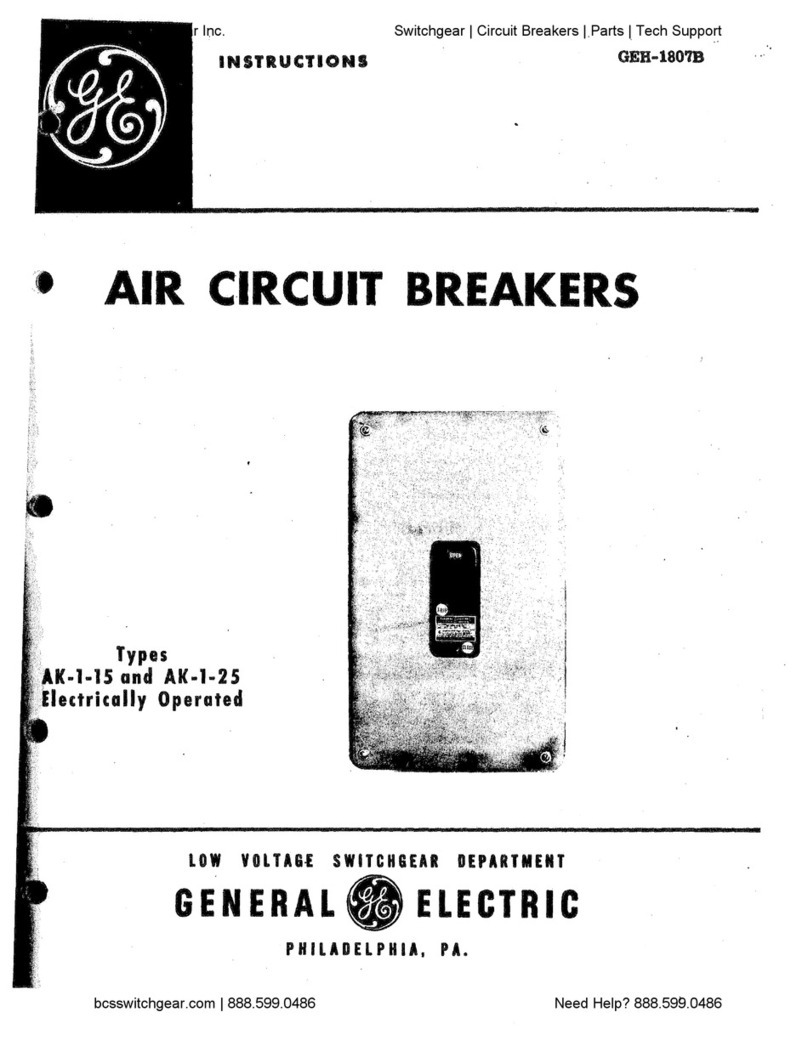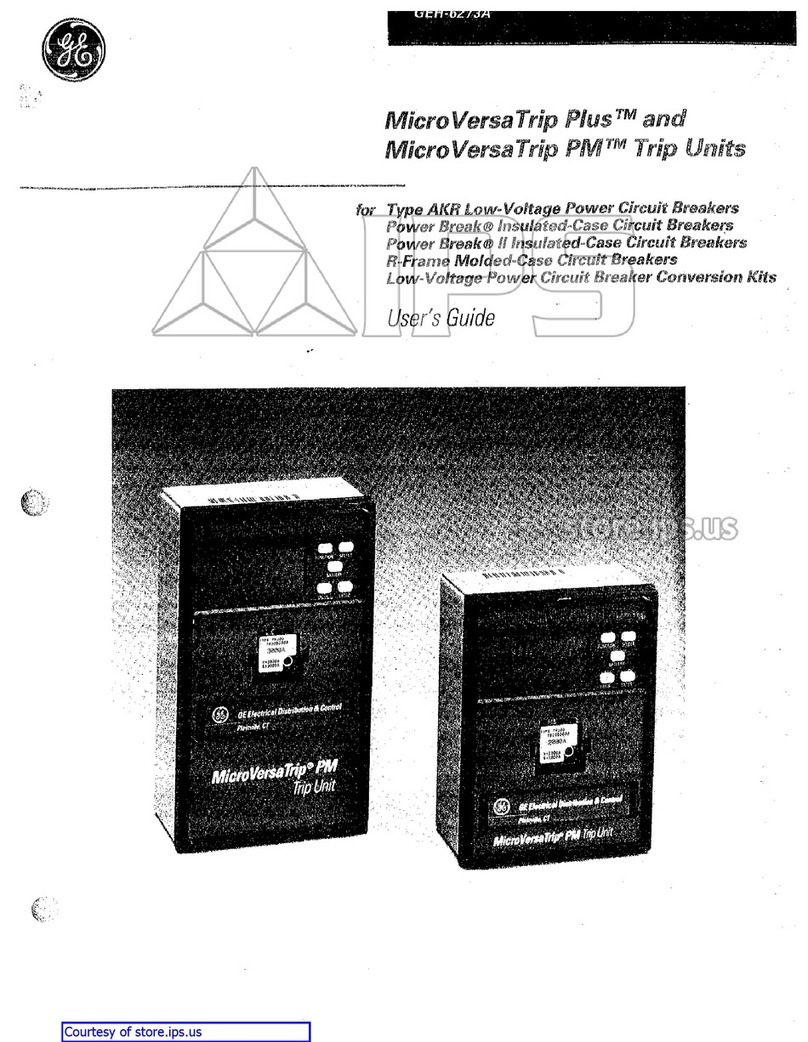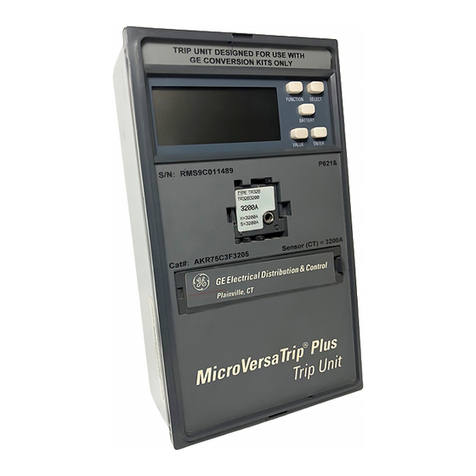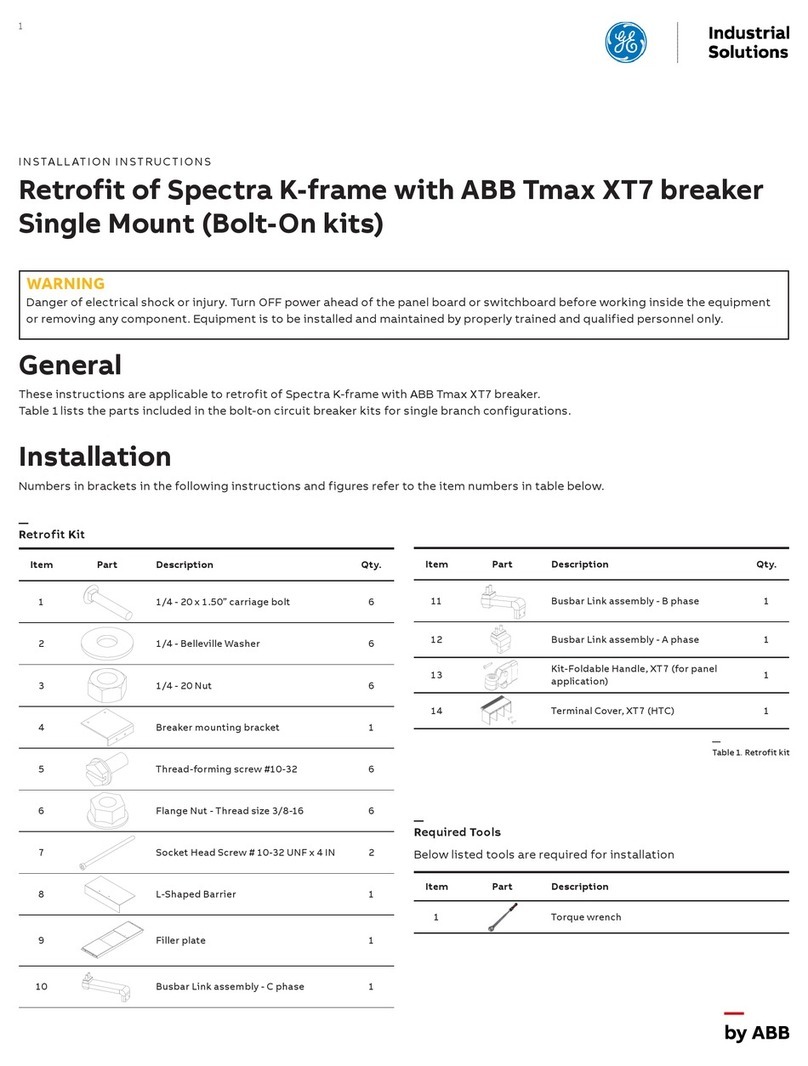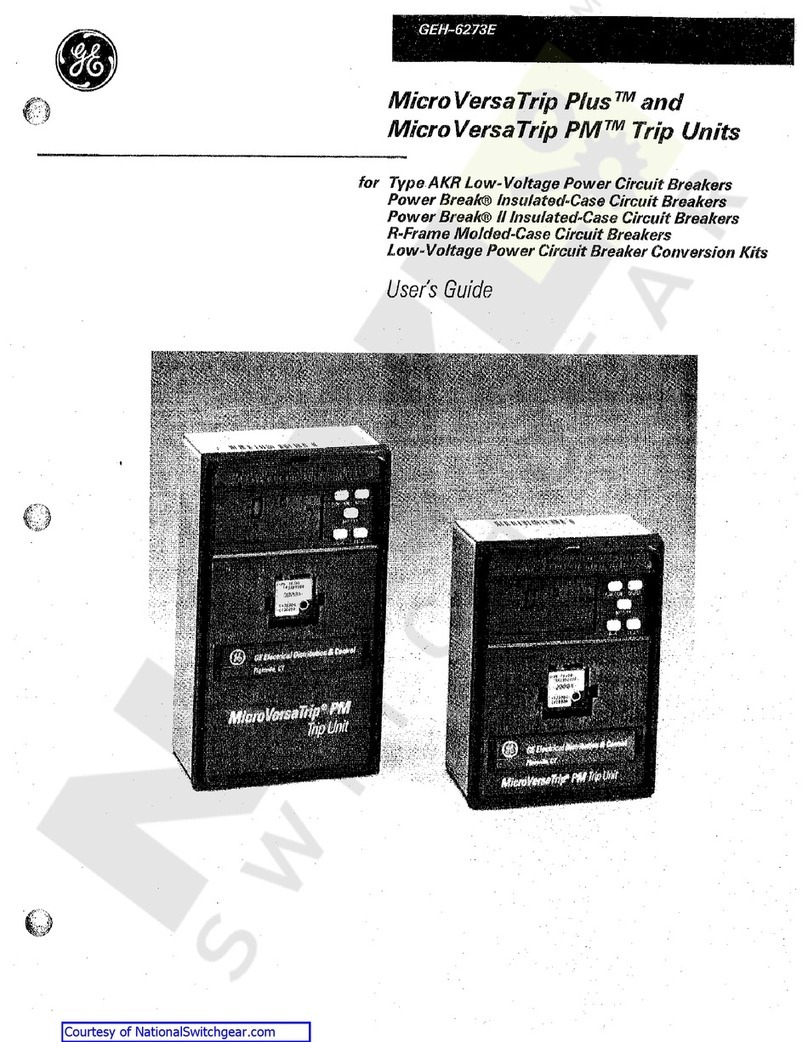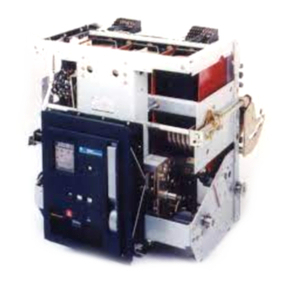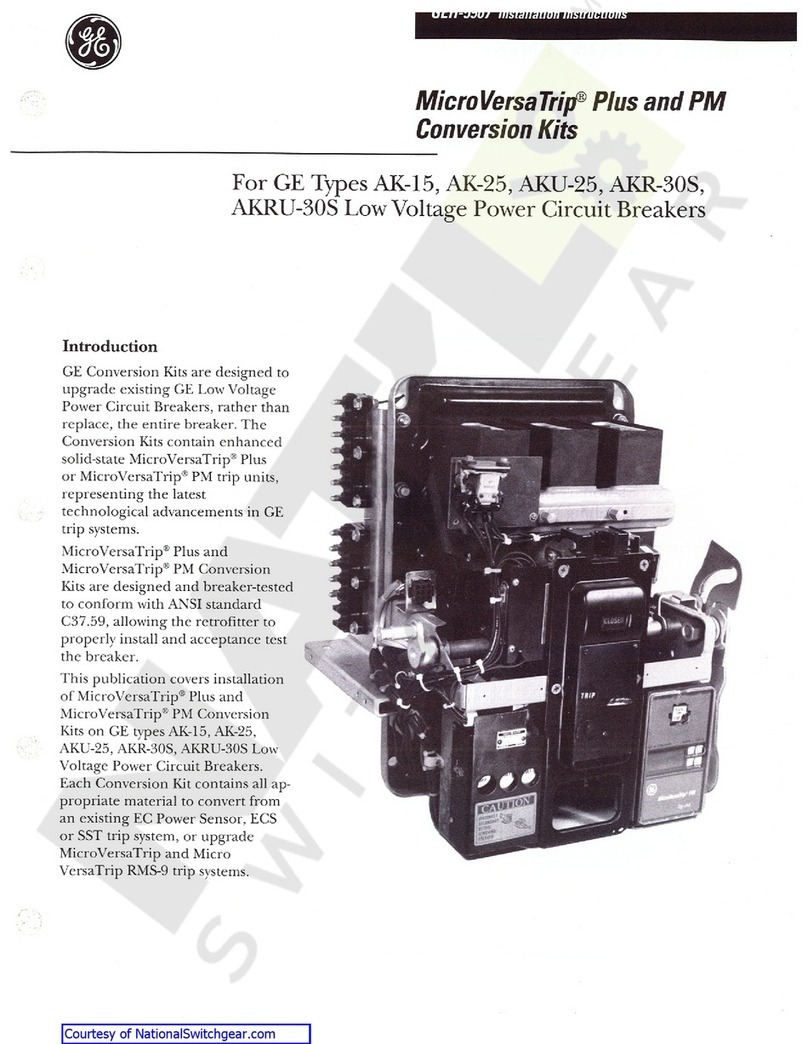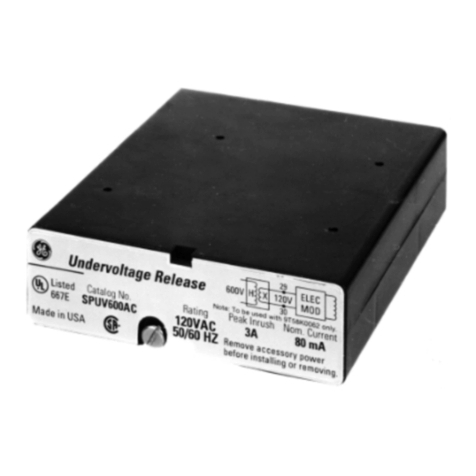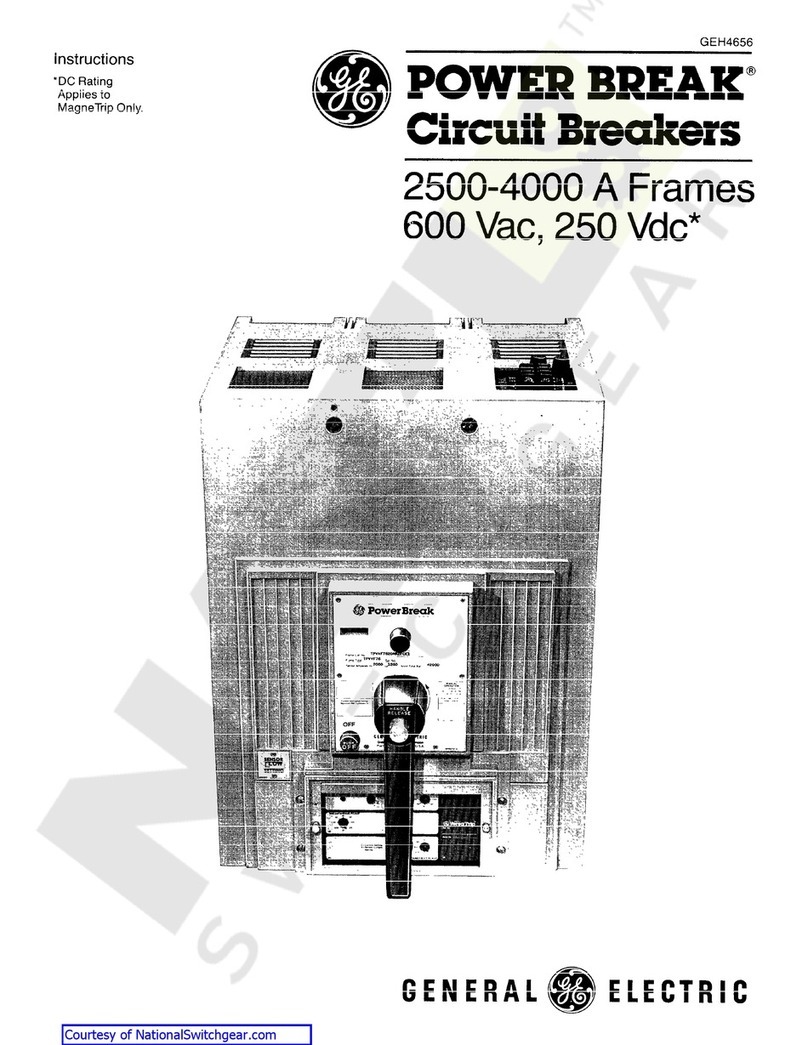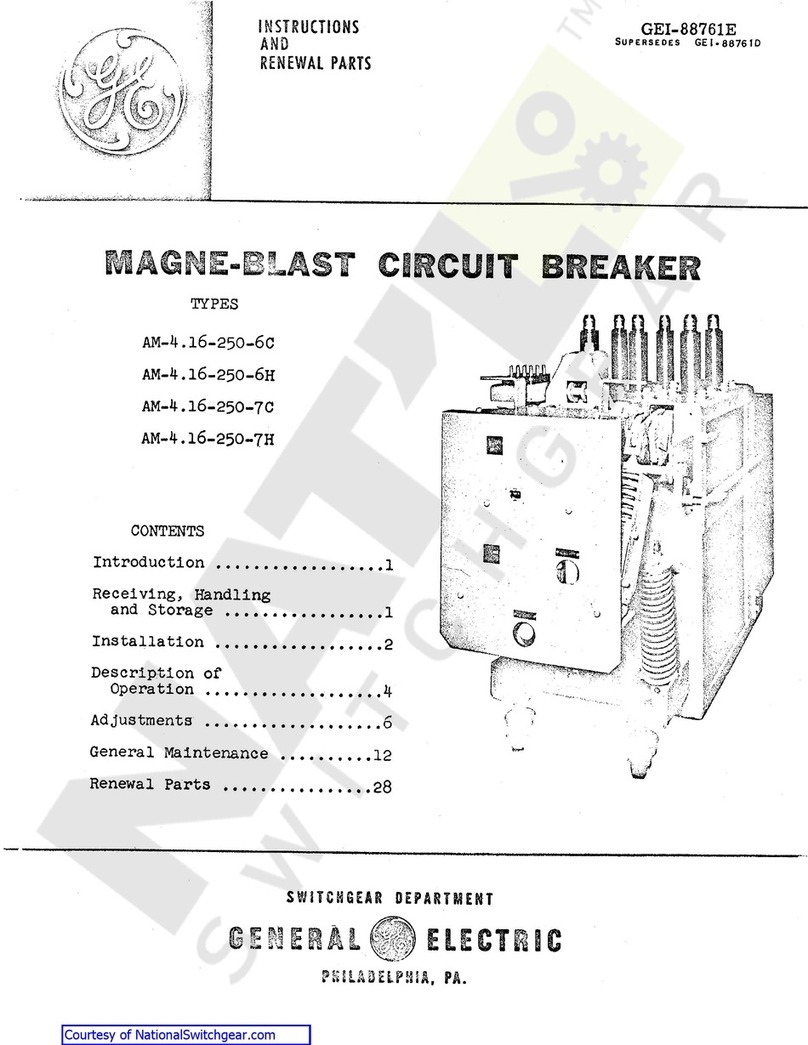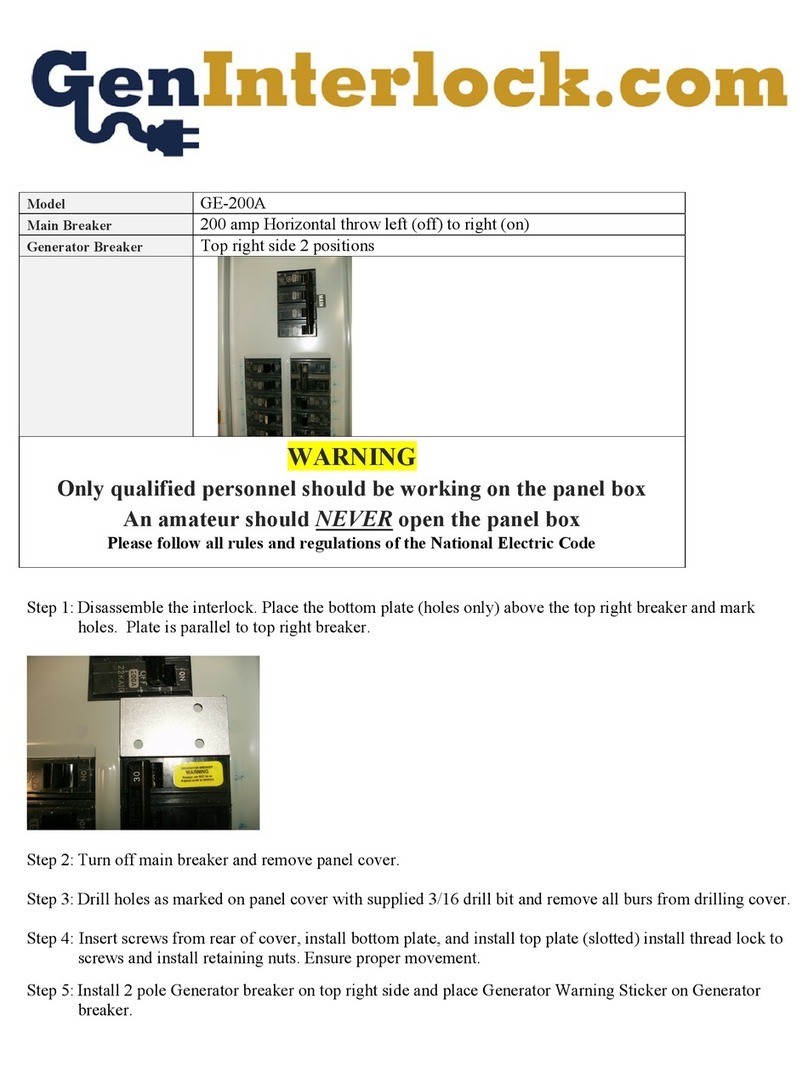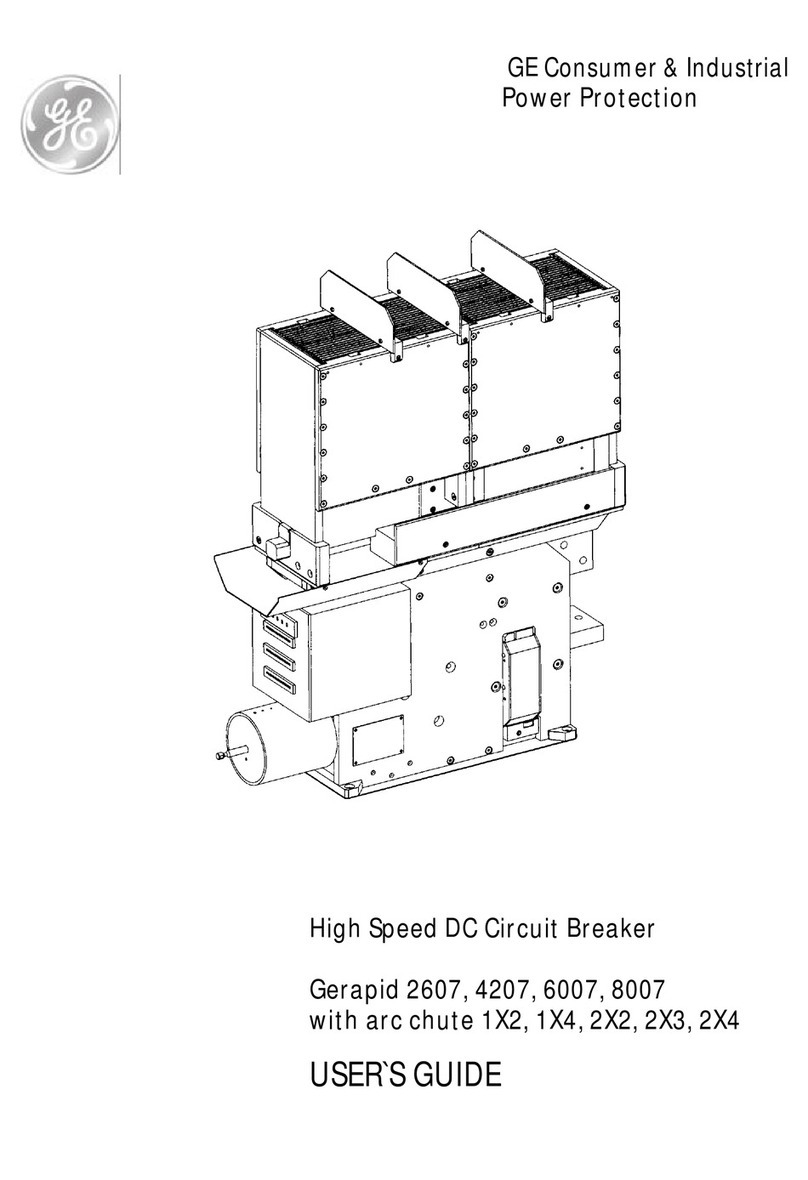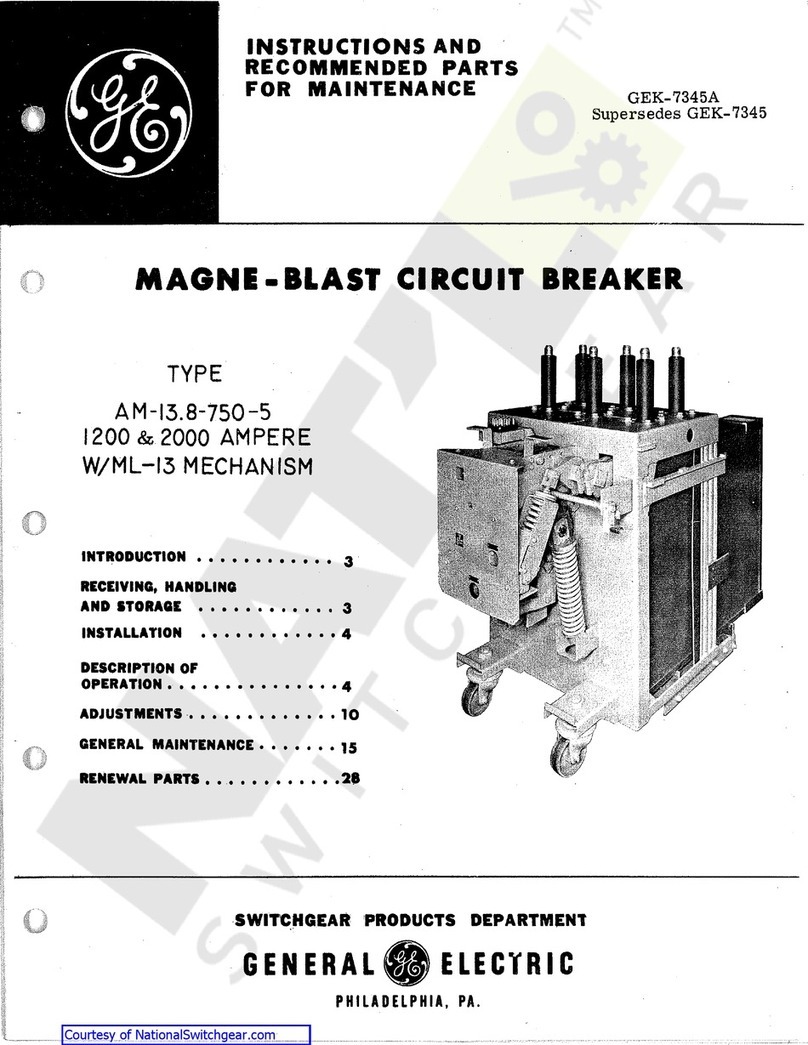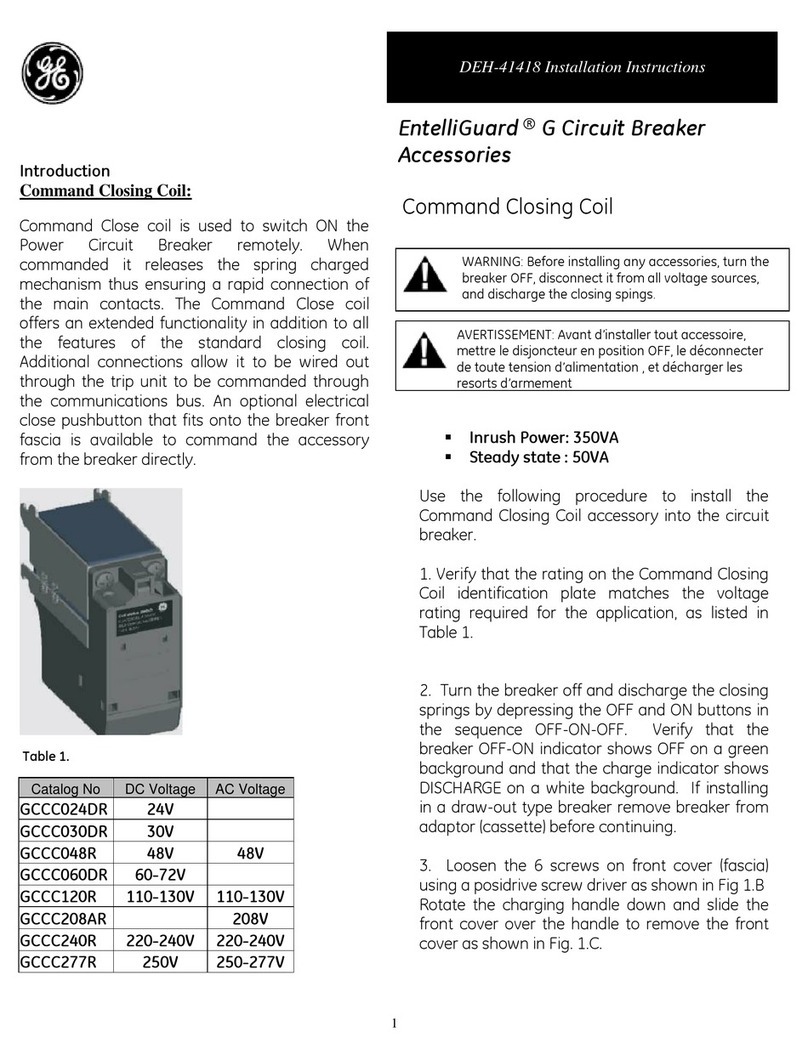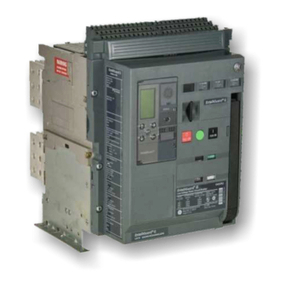
Drawout Breakers
5.1 GENERAL
Drawout breakersare manufactured in six different styles,
identified in Table2 bythemounting codelettersNone,
A,
8,
C,
D&
F.
The"no-letter"models areusedin GeneralElectri
e's
AKDSwitchgear. CodeAbreakerswerelaterintroducedwilti
AKD-5 Switchgear and feature closed-door drawout opera·
tion.Code
Band
Fbreakers provideanalternateclosed-door
drawout arrangement with the stationary element furnished
as a preassembled "substructure." Code C breakers are
exclusively
for
AKD-6 Switchgear; they employ the Code A
drawout mechanism but have finger-type primary studs in-
stead
of
tubular. Code D breakers were introduced wilti lhe
AKD-8 Switchgear and feature the Code 8 closed-door
drawoutmechanism.The construction andoperation of each
of these drawoutstyles is covered underrespectiveheadings
in the following text.
NOTE:
The
Code
Band
Code Fdrawout t)pesare
mutually interchangeable.
The
"
no
-letter
,"
Code
A.
Code C and Code D drawout types are mutually
noninterchangeable. Before attempting to insert a
breaker, verily that the breaker model matches the
compartment.
The Code
B,
D,and F breakers areidentical exceptfor lhe
following:
a. Position indication label.This label is mounted
on
the
sides of the breaker's deepescutcheonand indicates
the DISCONNECTED, TEST, and CONNECTED posi-
tions.The Code D breaker label ind
ic
ates the proper
position only inAKD 8 switchgear. The Code
Band
F
breakerIabels indicateproperly onlyinAKR
Su
bstru
c-
tures.
b.
Trip device. Code D and F breakers are factory sup-
plied with Micro-Versa
Tr
ip programmers. Code B
breakersaresupplied
with
SST
or
ECS programmers.
(A SST/ECS to
Mic
ro-Versa Trip conversion kit is
available).
c. Appearance. Code D and F breake
rs
use a different
color scheme on their deep escutcheons and labels.
Also,theyhavea differentlyshaped manual operating
hand
le
.
5.2
NO
CODE
LETTER (AKO SWITCHGEAR)
(Fig. 1)
These "no-letter" AKR-75/100 models are replacements
fortheir
AK
-75and AK-100 predecessors inAKD switchgear.
The
racking
mechanism
is
breaker-mounted
and
the
breakers are bolted
to
a roller-mounted tray in
an
arrange-
mentsimilarto the BType(see Section 5.4). Inaddition
to
the
characteristics
lis
ted in Table
1,
the
AKD
drawout has the
following unique aspects:
1. There are three (3) distinctdrawout positions-CON-
NECTED, TEST and WITHDRAWN.
2..
Racking travel occurs only between the CONNECTED
position and apointjustshort
of
reaching the TEST position.
3.
The compartment door must
be
open during racking.
5.2.1 BREAKER INSERTION
1. Prior to lifting a breakerto its intended compartment
location, observe the following precautions:
a.
Check the compartment
to
insure that
it
is free
of
foreign objects.
b. Verify that the breaker is the
correct
type
for
that
compartment.
c. Insure that the
breaker
is OPEN.
d.
Apply
a thin, fresh
coat
of
D50HD38 /ubricant to the
breaker
's primary disconnects.
e. Insure that the racking cams
on
the breaker are
correctly
posit
i
oned
for initial engagement with the
pins
in the compartment.
To
do
this, insertthe rack-
ing
handle
and
rotate
it
fully clockwise.
f.
If
a compartment contains a keylock,
it
will
not
ac-
cept
the AKA-75/100 replacement breakers as re-
ceived.
The
AKA
drawout mechanism differs from
that
of
its predecessor
AK
model, causing the
AKA
breaker to mechanically interfere with the keylock
during breaker insertion.
To
remedy this
it
will be
necessaryta relocate the keylock using
new
mount·
ing hardware included as a modification kit. So
al
-
tered, the compartment
accepts
both
AK
and
AKA
types.
2. Using a suitable lifting mechanism and spreader rig,
position lifting hooks at the cutout notches in the top wrap-
around frames
of
thebreaker. Exercise care to avoid damage
to the control wiring.
3. Open the compartment.door. Keeping the rollout tray
positioned insidethe compartment, raise the breaker above
the elevation of the tray.
4. Depressthetestpositionstoplever and pull thetrayall
the way out to its WITHDRAWN position.
5.
Lower the breaker over
!he
tray until
it
is about one-
half inch above the two dowel pins
on
the tray. Push the
breaker back into the compartment until the rear bottom
flange of the breaker rests against the guides behind the
dowel pins.
6.
Slowly lower and guide the breaker onto the tray so
the holes in the rear flange fit overthe two dowel pins. When
correctlypositioned
on
thedowelpins, the breaker's rear and
side bottom flanges will rest firmly
on
the
tray.
7.
Securethe breakerto the traybyinserting and tighten·
ing two-
-%
inch hex-headscrews into thefrontholes
of
itsside
flanges.
8.
If
the breakeris a manually operated type, push it into
the compartment until the TEST position stop engages,
preven
ti
ng
further travel. The breaker is now
in
the TEST
position.
6
Courtesy of NationalSwitchgear.com

